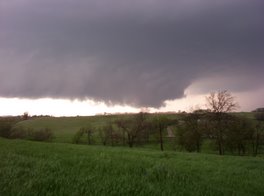Without question, the Left's talk-radio failures have been dramatic and have raised question over the source of their inability. Countless millions of investment dollars have been lost by Progressivist investors in seeking to replicate Conservative success in talk radio. Failures have been so dramatic that many have begun demanding governmental control of speech that would have been unthinkable to anti-establishment children of the 1960s.
Much of the confusion on the conservative-nature of talk radio stems from a misunderstanding of the media appetites of the Left and Right audience. Progressive conspiracies of rich station owners colluding with corporate advertisers in smoke-filled boardrooms aside, the real issue is that interactive talk radio is a format inconsistent with the method in which Progressivist orthodoxy is disseminated.
Progressives, through their various incarnations, are centralized, command-oriented thinkers. Based upon a long-established societal framework that is best illustrated through the example of liberal feudal lords and their protected peasantry, beliefs in their model are originated and established at the political manor and dictated to the serfs to accept. From centralized, government-administered economic models to their approach in handling nearly all policy matters such as the demand for central determination of appropriate radio speech, they seek to have the protection and unaccountability of having the lords at the castle make all decisions.
Subsequently, progressivist media is centralized. Besides a near monopoly of control in print and television, the Left disseminates its message through the radio medium using National Public Radio and British Broadcasting Company transmissions. Collaboration found in talk radio, being inconsistent with centralized though orthodoxy, is as useful to their peasantry as tampons for men.
Even in interpersonal dialog, true discussion and debate over ideas is foreign to the progressive peasant. Countless examples of screaming Leftists at speaking events which dare host a Conservative viewpoint, confiscation of newspapers of opposing thought, banishment of Fox News from debates, and even physical attacks on those who seek to discuss an opposing viewpoint are common. False claims of "consensus" in their issues (e.g. global warming) are keywords for demanding blind acceptance of the Castle's dictates.
Those who don't participate in the Left's feudal model should remember this isn't a new battle, nor does their model lack useful strategy and benefits. Indeed, feudal systems provide risk reduction utility for the peasantry and lords, at an exceptional cost of liberty, autonomy and peasantry wealth. From the perspective of societal risk management, the feudal model has numerous benefits, including:
- Effective dissemination and assimilation of messages under conditions of constrained economic and educational resources. Peasants are not critical thinkers and do not require advanced education to accept a unifying message.
- Reduced inefficiency caused by friction in opposing thought. Viewpoints are consolidated and distort the community's beliefs in a leptokurtic (fat-tailed) manner, so as long as the central tendency is the correct strategy, the community's successful outcome is more likely.
In other words, the Progressivist model is often a superior strategy when the Castle leadership is right, and a dramatic failure when it's wrong.
Opposing the Leftist assault on decentralized media isn't easy. It is important to remember that a good component of the population does not feel it possesses the ability to be accountable for their outcomes and would rather sell themselves into servitude to their lords in exchange for attaining a small portion of wealth confiscated from those who are more capable. If the central body of society's distribution is more comfortable with the Left's risk-reducing offer, decentralized free thinkers have little to offer.
Leftist peasantry is motivated by fear and our open distaste for their co-dependent behavior only reinforces their support for those who would empower their parasitism. Their lords prey upon fear and distrust (read George Soros's "The Alchemy of Finance" to understand how increased volatility, fear and instability are items Soros and his kin engineer in order to profit). In this climate, it's difficult for free persons to enhance trust and reduce the inclination for the peasantry to empower their lords.
Only efforts that provide tangible improvement in the financial and social bottom line of the masses counts. While the Bush tax cuts certainly had their impact, notable administration failures include the inability to promote the Fair Tax, the lack of party support for Social Security privatization and other important efforts that would have given the masses less reason to seek the protection of the Left's Castle.
Recommended Summer Reading: Check out Franz Kafka's outstanding novel, The Castle (available on Amazon for $7.50) for an exceptional insight into the motivations and frustrations associated with Progressive socio-economic systems.
